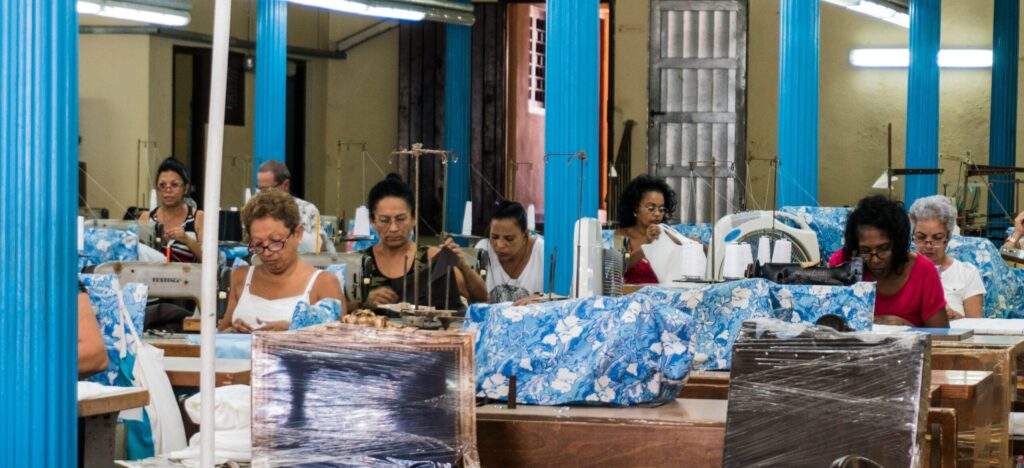Best Practice for Protecting Lone Workers in British Universities

Within British universities it is not unusual to find people working on their own. People working by themselves without close or direct supervision, where they cannot be seen or heard by others.
Who at University are lone workers?
Bath University have created a list of those they consider to be lone workers:
- People working alone in premises e.g. workshops, labs, kiosks, shops
- People who work from home other than in low risk, office type work (risks to these people are likely to be covered under other safety guidance such as safe use of display screen equipment)
- People working separately from others in isolation e.g. carrying out research, sports
- People working outside normal hours, e.g. cleaners and security or employees working late in offices or other facilities where there are few or no other employees about
- Maintenance or repair staff
- Mobile workers working away from their fixed base
- Workers involved in construction, plant installation, maintenance
- Horticultural and forestry workers
- Postal staff
- Those carrying out home visits
- Drivers¹
Lone worker guidelines from Bath University
As a result of the large number of lone workers within the university domain, Bath have established clear rules and regulations regarding communication and monitoring within their Lone Worker Safety Guidance:
Communication: This is vital for lone working especially if such work takes place remotely. Those working in remote offices will probably need little more than access by email or landline. For those identified as being at more risk such as fieldworkers and drivers, the introduction of a telephone monitoring system may be suitable…’ ²
Monitoring: Adequate procedures and processes must be put in place to monitor lone workers to help keep them safe and healthy, regardless of where they work. This might include the use of lone worker protection devices, buddy systems or agreed contact with lone workers. Signing in/out books can also be a way of recording who is working out of hours in specific buildings.’ ᵌ
How Bath University protects it's lone workers
Bath University are very proactive in their approach to lone workers, requiring students and staff to have a means of summoning assistance in an emergency,
‘Lone workers, especially those who work at remote locations or outlying parts of the University estate (including campus grounds), should be able to quickly summon assistance in an emergency. If an internal telephone is not readily available to the lone worker, lone worker alarms should be used if possible. Where these are not available an alternative system of control must be used. This could include, for example two-way radios, telephone checking systems requiring users to report at agreed intervals to Security, or having Security regularly patrol the area where work is being undertaken.’ ⁴
What are other British universities doing to protect lone workers?
Other British universities also have clear guidelines and regulations lone workers need to adhere to. Many institutions set out guidance on performing risk assessments before tasks are undertaken and establish who within the university is responsible for checking this is done.
Who is responsible for university lone worker safety?
Manchester University includes the following statement in their Lone Worker Guidance,
‘Line managers and staff who supervise students have a duty of care and responsibility to ensure that risk assessments and local procedures are developed, implemented, monitored and adhered to. Lone workers also have a responsibility to follow the procedures for their own safety.’ ⁵
Glasgow University put the onus on Line Managers and Academic Supervisors,
‘Monitoring lone activities in their area of responsibility to ensure that they are risk assessed and conducted safely.’ ⁶
Whilst Bristol University deems it the responsibility of the Heads of School/Service,
‘The Head of School/Service is responsible for ensuring that arrangements are in place to eliminate the risk from lone working where possible and effectively manage lone working in their areas of responsibility and that these arrangements are communicated to all staff, students and visitors via a local rules document.’ ⁷
What systems are universites using to protect lone workers?
Manchester University suggests lone workers use ‘panic buttons in isolated offices or consultation rooms. Mobile phone solutions with text, panic, GPS, ‘man down’ and smartphone solutions.’ ⁸ Nottingham University has similar guidance recommending that for lone workers ‘It may be necessary to provide personal alarms or workplace alarms…’ ⁹
Panic buttons and lone worker solutions run through smartphones are simple and convenient ways to help students and staff stay safe. Using an app on their smartphone means no additional devices need to be purchased and the system can be used straight away.
How Ok Alone can be used to protect lone working staff and students
The Ok Alone lone worker solution has a wide range of features designed to make people working in isolation feel safer. The system has an automated countdown timer which reminds lone workers to make contact by checking in using either a smartphone app, SMS or phone call. Workers are able to change the frequency of their check ins with the ‘high-risk’ feature. If a lone worker is carrying out an experiment or enters an area where they feel vulnerable, they can reduce the check in time to as little as 10 minutes. After the time has passed with no alerts, the check in frequency will revert to the original count down duration.
What features does Ok Alone have to protect university lone workers
One of the features, the Man Down (Worker Down) function, alerts those monitoring workers if there has been no movement from a worker within a set amount of time. This could help indicate if the worker has been involved in an accident in a workshop or lab or an assault whilst working off campus and requires immediate assistance.
Ok Alone’s lone worker smartphone app works in conjunction with a website and cloud-based dashboard that can be used on a pc, laptop, tablet or another smartphone. The online dashboard will display a map supplying the workers last known location if an alert is triggered. This will help locate a worker who is trouble.
Using a lone worker device allows students and staff to continue working in isolation whilst knowing help can be there when they need it.
1, 2, 3 – 2019 SHEW Lone Worker Safety Guidance - University of Bath
Book a Demo Today
Alternatively, get a free trial of the app
Want to try OK Alone? Click the button below and enter your details. It's free and no credit card is required.





